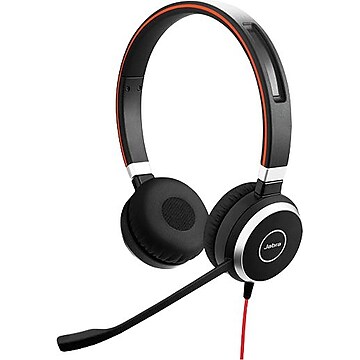Computer Headsets
Related Searches
Trending now
Efficient communication is essential to a successful workplace, and the colleagues you need to reach aren’t always in the same room or even the same building. Keep communication lines open with the right computer headset to fit your needs.
Why Should You Get a Headset?
In the workplace, they make it easy to communicate hands-free with customers, coworkers, investors and more. If you work in a loud or busy environment, noise cancelling headsets will help you focus on calls, presentations or other work without being disrupted by ambient sound. Conversely, playing media through a headset will allow those around you to concentrate better, too. If you anticipate participating in video conferencing often, headsets and microphones are must-haves.
What Are The Benefits of Using a Computer Headset?
Headsets are versatile devices with many uses from video conferencing to gaming to playing music for increased productivity. They’re the perfect companion to desktop computers for the office. All computer headsets offer the following benefits:
Hands-Free Calling
Headsets remove the need to hold a device while communicating, allowing you to call hands-free while taking notes, controlling presentations and otherwise responding dynamically to your meetings. They also take up less space than corded office phones.
Reduce Arm and Neck Stress From Telephone Usage
Holding a telephone for extended amounts of time can cause tension and stress in your arms, neck and hands. Hands-free headsets allow relief by not forcing users to hold one position in order to use the device. Additionally, the microphone in your headset stays the same distance from your mouth, which keeps audio levels stable while you speak.
What Types of Headsets Are Available?
There are a variety of headset types available so that you can choose what features work best for you. Some of the most common options include:
Wired
These headsets are compatible with most operating systems found on desktop computers, providing easy plug-and-play solutions for calls, video conferences, podcasting or even gaming. Typically, these headsets are plugged in by USB cords.
Wireless
These transfer data wirelessly from business laptops and other Bluetooth devices to the headset, eliminating the need to be tethered to your desk. Simply connect the two devices through your Bluetooth settings and you’re set to use the headset any time you need.
Clear Audio and Noise Cancellation
Clear Audio: For businesses with busy backgrounds such as call centers, a microphone can drastically improve customer service interactions over the phone by dulling or removing distracting background sound. Some headset microphones can even improve the quality of your audio being transmitted.
Noise Cancellation: This technology blocks out ambient sound, allowing you to focus on your calls, videos, meetings or music while you work. From active noise cancelling headsets to merely ambient sound cancellation, this type of headset will help you stay on task without distraction.
On-Ear Controls to Quickly Adjust Settings
On-ear controls allow you to change the volume or settings of your headset without using your playback device. Conveniently located buttons on the earpiece can help save you time. High-quality inline settings in headphones also include controls for other equalization settings to use in audio engineering and sound studios.





































































































